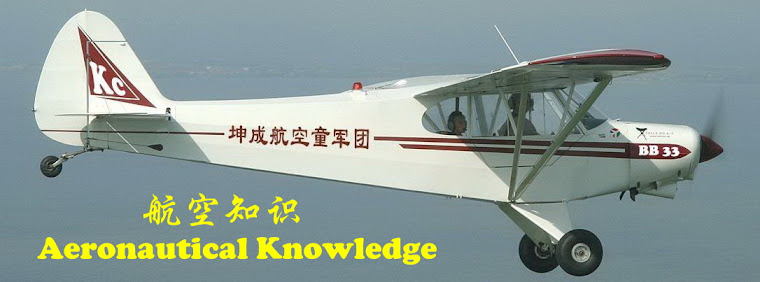渦輪發動機(Turbine engine,或常簡稱為渦輪,Turbine)是一種利用旋轉的機件自穿過它的流體中汲取動能的發動機形式。經常在飛機與大型的船舶或車輛上看到其應用。
雖然渦輪發動機可能有許多不同的運作原理,但最簡單的渦輪型式可以只包含一個「轉子」(Rotor),例如一個帶有中心軸的扇葉,將此扇葉放置在流體中(例如空氣或水),流體通過時對扇葉施加的力量會帶動整個轉子開始轉動,進而得以從中心軸輸出軸向的扭力。風車與水車這類的裝置,可以說是人類最早發明的渦輪發動機原型。
依照不同的分類方式,渦輪發動機也可以分類成很多不同的型式。例如以燃燒室與轉子的位置是否在一起來區別,就存在有屬於外燃機一類的蒸汽渦輪發動機,與屬於內燃機的燃氣渦輪發動機。
如果將渦輪發動機反過來運作,則會變成一種輸入力量之後可以將流體帶動的設備,例如壓縮機(compressor)與幫浦(pump,又稱為「泵」)。
有些渦輪發動機本身具有多組扇葉,其中部分是用於自流體汲取動力,部分是用於推動流體,二者不能混為一談。舉例來說在大部分的渦輪扇葉發動機與渦輪螺旋槳發動機中,位於燃燒室之前的扇葉實際的作用是用於加壓進氣,因此應被視為是一種壓縮機。真正的渦輪機部分是位於燃燒室後方的風扇,被燃燒後的排氣推動產生動力,再透過傳動軸將力量輸送至主扇葉(渦輪扇葉發動機)或螺旋槳(渦輪輪懸槳發動機)處,推動其運轉。
A turbine is a rotary engine that extracts energy from a fluid flow. Claude Burdin (1788-1873) coined the term from the Latin turbo, or vortex, during an 1828 engineering competition. Benoit Fourneyron (1802-1867), a student of Claude Burdin, built the first practical water turbine.
The simplest turbines have one moving part, a rotor assembly, which is a shaft with blades attached. Moving fluid acts on the blades, or the blades react to the flow, so that they rotate and impart energy to the rotor. Early turbine examples are windmills and water wheels.
Gas, steam, and water turbines usually have a casing around the blades that contains and controls the working fluid. Credit for invention of the modern steam turbine is given to British Engineer Sir Charles Parsons (1854 - 1931).
A device similar to a turbine but operating in reverse is a compressor or pump. The axial compressor in many gas turbine engines is a common example.
skip to main |
skip to sidebar


什么是飞机
飞机具有两个最基本的特征:
其一是它自身的密度比空气大,并且它是由动力驱动前进;
其二是飞机有固定的机翼,机翼提供升力使飞机翱翔于天空。
不具备以上特征者不能称之为飞机,这两条缺一不可。
譬如:一个飞行器它的密度小于空气,那它就是气球或飞艇;
如果没有动力装置、只能在空中滑翔,则被称为滑翔机;飞行器的机翼如果不固定,靠机翼旋转产生升力,就是直升机或旋翼机。
因此飞机的精确定义就是:飞机是有动力驱动的有固定机翼的而且重于空气的航空器。
以下是飞机基本结构的简单介绍。
机头 nose
驾驶舱 cockpit
起落架 undercarriage
机身 fuselage
机翼 wing
襟翼 flap(also aileron)
喷气式发动机 jet engine
金属罩 cowling
垂直机翼 fin
机尾 tail
方向舵 rudder
其一是它自身的密度比空气大,并且它是由动力驱动前进;
其二是飞机有固定的机翼,机翼提供升力使飞机翱翔于天空。
不具备以上特征者不能称之为飞机,这两条缺一不可。
譬如:一个飞行器它的密度小于空气,那它就是气球或飞艇;
如果没有动力装置、只能在空中滑翔,则被称为滑翔机;飞行器的机翼如果不固定,靠机翼旋转产生升力,就是直升机或旋翼机。
因此飞机的精确定义就是:飞机是有动力驱动的有固定机翼的而且重于空气的航空器。
以下是飞机基本结构的简单介绍。
机头 nose
驾驶舱 cockpit
起落架 undercarriage
机身 fuselage
机翼 wing
襟翼 flap(also aileron)
喷气式发动机 jet engine
金属罩 cowling
垂直机翼 fin
机尾 tail
方向舵 rudder
博客归档
-
▼
2009
(123)
-
▼
四月
(104)
- Cockpit Voice Recorders
- How Black Boxes Work
- 飞行的原理
- 轻松一下
- 无标题
- History of Aircraft Engines
- Piston Engine Development
- 活塞式发动机 Piston Engine
- 渦輪扇葉發動機 Turbofan Engine
- 渦輪噴射發動機 Turbojet Engine
- 渦輪螺旋槳發動機 Turboprop Engines
- 渦輪發動機 Turbine Engine
- 渦輪軸發動機 Turboshaft Engine
- 认识飞机的高度表
- The Basic of Flight ( 4 )
- The Basic of Flight ( 3 )
- The Basic of Flight ( 2 )
- The Basic of Flight ( 1 )
- The Aviation Dictionary
- 飞行原理简介 (二)
- 航空气象知识
- 确定飞行姿态
- 测量飞行的高度、速度和方向
- 飞机座椅与安全
- 飞行原理简介(一)
- 飞机上典型乘客们的七种类型
- 飞行员的飞行全过程
- 八种航权简介
- 为什么要在航班起飞前30分钟停办登机手续
- 为什么飞机要用雷达操纵
- 乘机安全常识
- 飞行安全
- 风切变 Wind shear
- 关于飞机机翼 (三)
- 关于飞机机翼 (二)
- 关于飞机机翼 (一)
- 海里 Nautical mile
- 能見度
- 中英文飞机维修部品
- 民航专业术语解释
- 民航专业缩略语
- 民航常用基本缩略语
- 民航常用名词解释
- 飞机维修工作的分类
- 飞机发动机原理
- 飞机跑道为何南方长北方短
- 飞机上的电力与灯光
- 机翼会不会突然折断?
- 民航飞机需要飞多远
- 为什么民航飞机没有降落伞?
- 喷气式发动机安全吗?
- 飞行离不开仪表
- 飞行中听到的那些古怪噪音是什么?
- 飞行中舱门能打开吗?
- 湍流危险吗?
- 乘坐飞机时,为什么晴空也会有颠簸 ?
- 飞机起飞时乘客为什么要系好安全带?
- 全天候飞机与全天候飞行员
- 飞机误入雷区会有危险吗?
- 飞机着陆机场上空突然出现雷雨怎么办?
- 飞机的制造原理 (二)
- 飞机的制造原理 (一)
- 飞机的主要飞行性能
- 飞机是怎样生产制造的?
- 飞机外形结构
- 飞机内部火灾的特点与灭火方法分析
- 飞机机翼
- 飞机为何不能像黑匣子那样坚固?
- 白匣子
- 黑匣子--飞行信息记录系统
- 航班飞行的各阶段简要介绍
- 民航飞机的通信系统
- 飞机起飞前之准备工作
- 什么是航空安全?
- 为什么飞机进气口有圆有方?
- 三万英尺高空飞行安全
- 云对飞行的影响
- 夜航安全吗?
- 大雪中,航班为何迟迟不飞?
- 影响飞行活动的天气
- 怎样看待飞机着陆的轻与重?
- 机载防撞系统
- 空中交通规则,也称优先通行权规则
- 空姐为什么在飞机起飞前做氧气面罩使用示范?
- 驾驶员在看不清跑道的情况下如何着陆?
- 飞机上为什么要装红绿灯?
- 飞机上坐在什么位置最安全?
- 为什么飞机也要“洗澡”?
- 机在机场上空放掉燃油会带来危险吗?
- 飞机是怎样加油的?
- 飞机的油箱放置在什么地方?
- 飞机机舱窗门为什么装双层玻璃?
- 为什么飞机上禁止使用某些电子器材
- 飞机着陆前为什么有时会在机场上空转圈?
- 飞机起飞前为什么有时要在滑行道与跑道交界处等待一会儿?
- 飞机起飞后发动机速度为何减慢
- 飞机起飞前在地面滑行时靠的是什么动力
- 飞机在空中飞行也有交通规则
- 飞机为什么总是迎风起降?
- History of Air Scouting in USA
-
▼
四月
(104)
我的简介

- 刘教练
- 1968年开始参加童军活动。 目前担任吉隆坡坤成童军团总团长兼坤成小学一校童军团教练。 1996年创立全国第一团稚龄童军(Pre-Cubs),并于2002年成立华校第一团航空童军(Air Scout}。 兴趣是摄影、阅读及军事模型制作。


